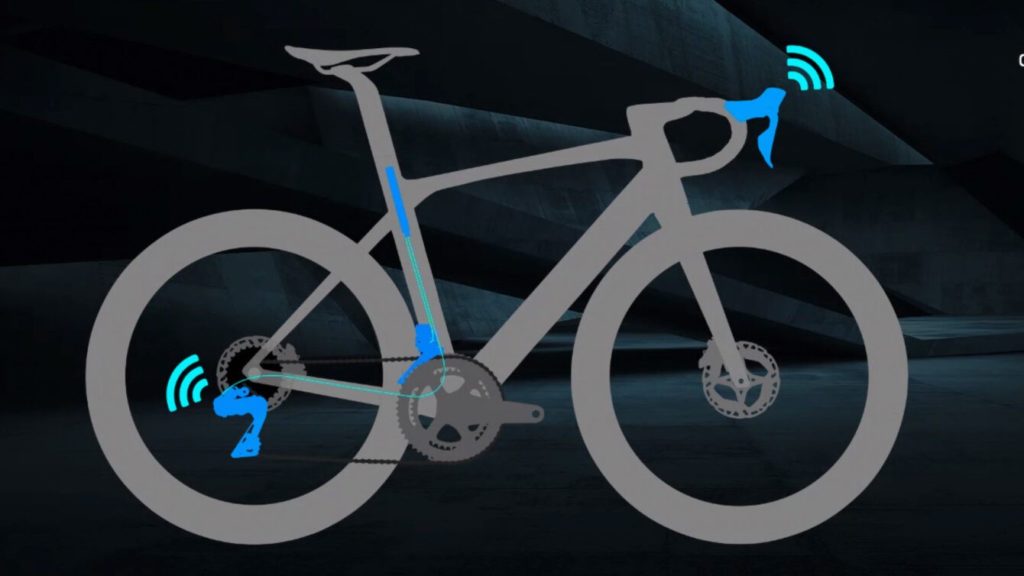20/09/2021
Whilst spring of 2020 saw many large business sectors grind to a relative halt, the wheels of the cycling industry were turning faster than ever. In the UK alone, bicycle sales were up 63% year-on-year and cycling increased by as much as 200% during the first lockdown. With this flurry of interest in the market, be it as a fitness hobby or an alternative to a public transport commute, government funding followed with the installation of new cycle-friendly infrastructure and bike repair vouchers. The relative bicycle boom throughout the pandemic has not been without setbacks however, primarily in the form of supply chain issues caused by surging demand and key components finding themselves occasionally stuck in the Suez Canal.
The events of the last 18 months certainly have not squeezed the brakes on cycling tech innovation either. In a year which sees Shimano celebrate their 100 year anniversary, the cycling component giant have released their latest offering of their top-spec, road cycling specific, groupset, Dura-Ace 9200. For those newer to the cycling world, a groupset can be seen as the central nervous system of the bike, controlling the gears and brakes, and comprised of derailleurs, cranks, chains, cassettes and shifters.

The first offering from Shimano under the Dura-Ace branding was back in 1973, though the ethos throughout each iteration has remained: delivering the best professional level performance without compromise. Dura-Ace groupsets have seen steady improvements over the years with increasing numbers of gears, reductions in weight, and advances in shifting and braking performance.
On the 31st August, the latest version of Dura-Ace, 9200, was released with some notable changes. The latest developments to be gracing the likes of the pro peloton in the upcoming season include 12 gears for riders to now work with on the rear cassette, significantly reduced shifting times, and refinements for disc-brake systems. The most significant development however comes in the form of semi-wireless gear shifting.
Some of the first clues that Shimano were seriously heading in the wireless direction emerged in October 2017, with the publication of US patent application US 2017/0305490 A1. The application discloses a wireless communication unit disposed at one of the base member (the shifter hood) and the brake operating member (the brake/shifter lever). These two alternatives are shown below, with the coin cell that powers such units highlighted in orange. The shifters below are to be attached to handlebars of a road bicycle, and control both braking action and gear changes.

With the wireless shifting technology clearly being at an early developmental stage, it was crucial that Shimano protected their ideas at the broadest and most conceptual level. Embodiments disclosed the technology for both hydraulic and cable methods of braking, for road bicycles (as shown above) and time-trial bicycles (not shown), and for a wide range of locations of the wireless communication unit. This style of application was likely due to Shimano wanting to remain flexible to any developments in the market by competitors, as well as to cover all possible embodiments of a product which was very much in its infancy. In fact, neither of the two locations of the coin cell as shown above would go on to make it into Dura-Ace 9200.
Increasingly major clues as to the eventual direction that Shimano were taking were made public in March of this year. Another US patent application, US 2021/0061413 A1, disclosed what would eventually go on to be the so called semi-wireless system that Dura-Ace 9200 employs.

In the new semi-wireless design, shifting signals are now to be sent wirelessly between shifters and the derailleurs, though with the rear and front derailleur wired together and powered by a single battery located in the frame of a given bicycle. Shimano’s Dura-Ace line has had electronic shifting options since 2009, but always with physical wires between shifters and derailleurs. In the released product, shifting signals for both the front and rear derailleur are sent to the rear derailleur. However, a broad drafting approach appears to covers embodiments in which shifting signals for are sent to the front and rear derailleurs separately.
Wireless shifting is nothing new in the world of cycling. Shimano’s main competitor, Chicago-based bicycle component manufacturer SRAM released a fully wireless shifting system, eTap, back in 2015. In eTap systems, both front and rear derailleurs use individually mounted batteries, and each communicate wirelessly with the shifters.
With SRAM’s wireless system already on the market, Shimano will have needed to navigate around SRAM’s existing patent portfolio. An example of this can be found in the Shimano’s claim 1 from US 2021/0061413 A1 as published, which reads: “A bicycle derailleur comprising: a unit mounting portion; a wireless communicator disposed at the unit mounting portion; an electrical connector receiving portion configured to receive a connector; and a power supply portion configured to receive electricity from a battery disposed at a location apart from the bicycle derailleur.”
It is likely that the underlined portion was necessary to distinguish Shimano’s concept from SRAM’s eTap product line.
Patents are known to provide a valuable window into the technological output of innovating firms, such as Shimano. For example, the publication of three US applications from Shimano: US 2021/0139102 A1, US 2021/0139105 A1 and US 2021/0144453 A1, in May 2021 provided a strong suggestion that a product launch was on its way. All three disclose a refined location for the power supply (coin cell) and circuitry: at the end of the shifter furthest from the handlebars. Figure 4 below highlights this location of the power supply, again in orange. Filed back in 2019, these correlate to the exact location of the shifter batteries as found in Dura-Ace 9200. The relatively narrower and more focussed disclosure, coupled with the flurry of applications aiming to protect the same feature, was an indication that Shimano were firmly set on a location for the power supply and circuitry, and a product launch was in the pipeline.

However, the public will generally only be able to peak through such a window 18 months after a patent application is filed. It will therefore be a while until we see any additional patent applications that could have been filed in the run-up to the Dura-Ace 9200 launch.
The cycling world is clearly growing rapidly in a multitude of directions, be it professional racing or casual commuting, and patents provide some insight into what cycling innovators believe those directions may be. In what was already a competitive market, intellectual property rights are proving increasingly crucial to companies wanting to gain a foothold and establish their position in the market. If you are looking for advice on protecting your cycling IP, please contact a member of our team of keen cyclists, which includes Josh Parsi, Nick Tyrie and Joseph Duffy.
This article is for general information only. Its content is not a statement of the law on any subject and does not constitute advice. Please contact Reddie & Grose LLP for advice before taking any action in reliance on it.




